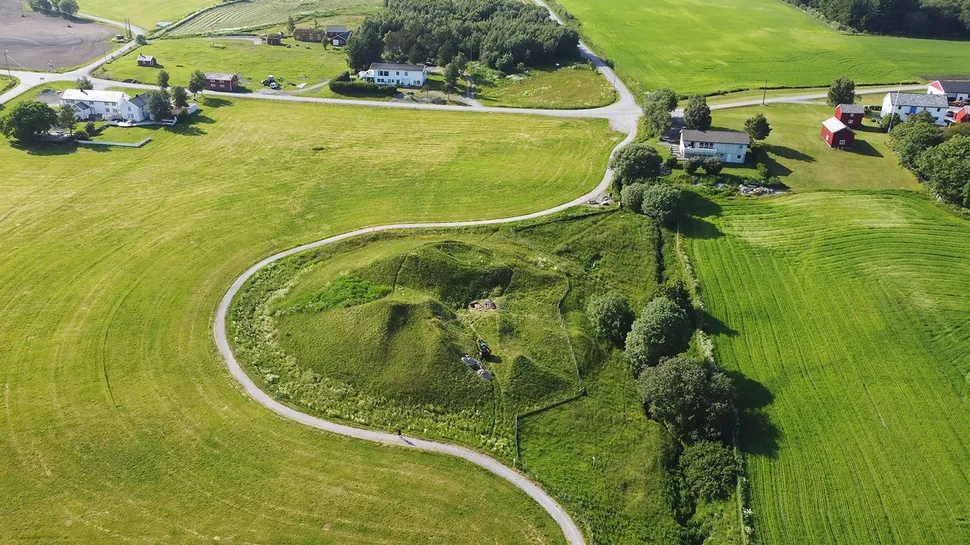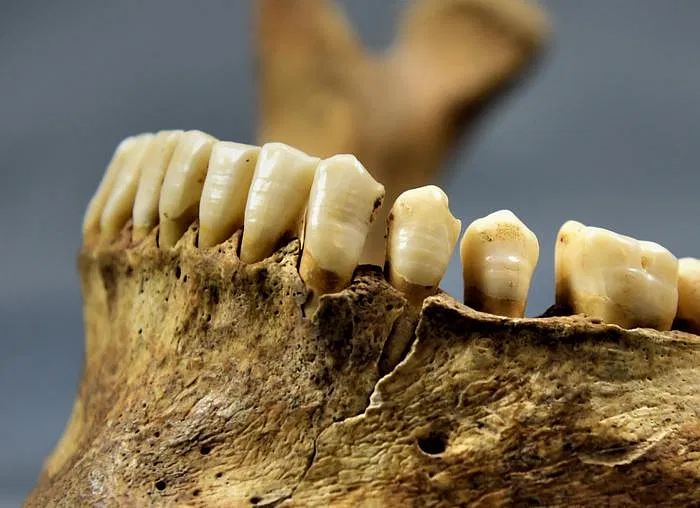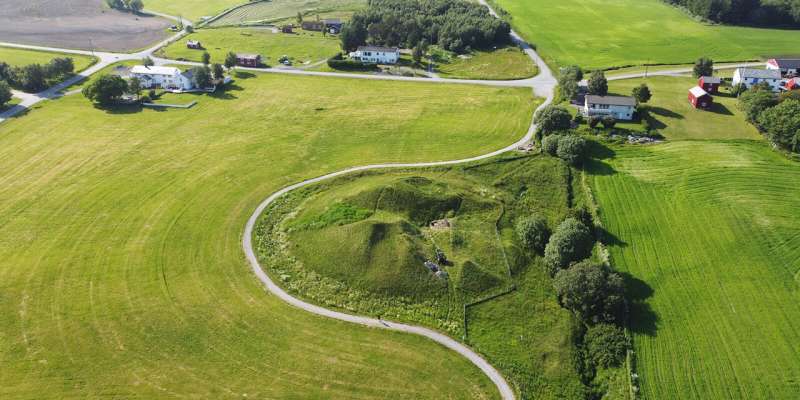
An aerial view of the burial mound in central Norway. (Image credit: Geir Grønnesby)
A large, grassy hill in Norway known as the Herlaugshagen burial mound was likely the site of a pre-Viking ship burial, a new analysis finds.
Archaeologists have long wondered whether the oversize mound in Leka, a municipality in central Norway located along a known centuries-old shipping route, once housed a ship. This summer, researchers conducted surveys at the coastal site and discovered several large rivets that would have held the vessel together, as well as wooden remains that are likely from the ship, according to Norwegian SciTech News, a news outlet that provides coverage for the Norwegian University of Science and Technology (NTNU) and the Foundation for Industrial and Technical Research (SINTEF).
"The sizes of the ship's rivets and the preserved wood around several of the rivets show that the preservation conditions are good," Geir Grønnesby, an archaeologist at NTNU who led the surveys, told Live Science in an email. "This is the largest burial mound in Trøndelag (Central Norway) and one of the largest in Norway."
Read the rest of this article...





:focal(450x315:451x316)/https://tf-cmsv2-smithsonianmag-media.s3.amazonaws.com/filer_public/89/68/89689564-c0d6-4e1d-ac17-590973b16b25/marketscene-900x627.jpeg)

